Is the Scottish Parliament really banning protests?
- Published
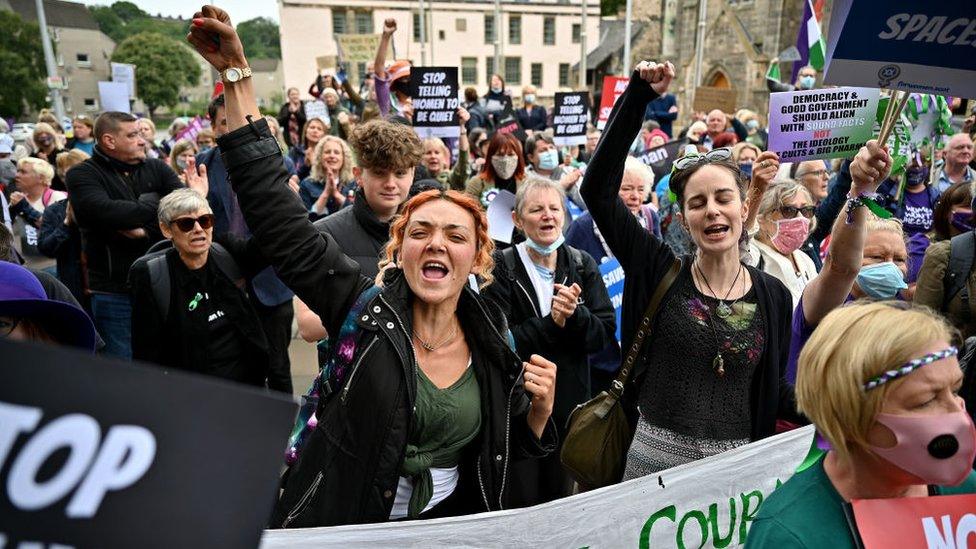
Holyrood authorities insist that peaceful protests will still be welcome at the parliament
From 1 October, the grounds of the Scottish Parliament will be designated as a protected site - meaning police will have extra powers to break up "disruptive" protests under national security rules.
Holyrood officials say this is a proportionate measure which will not affect the right of campaigners and activists to make their voices heard, but there have been complaints that it could lead to a crackdown on peaceful protests outside parliament.
So why are the rules being changed?

What's happening?
Protests and rallies are an almost daily occurrence outside the Scottish Parliament. MSPs frequently take part in them themselves, or at least join in long enough to have their picture taken.
But from next month officials will have extra powers to break up "disruptive" protests, with the Holyrood estate being designated as a "protected site" under UK policing legislation.
This would bring Holyrood into line with the Westminster parliament and the Welsh Senedd, and give the police more authority to remove people from the grounds of the parliament if their actions are deemed to be too extreme.
Presiding officer Alison Johnstone said this would "maintain the right to protest in a manner which does not impede parliamentary operations whilst also giving police the power they need to support us".
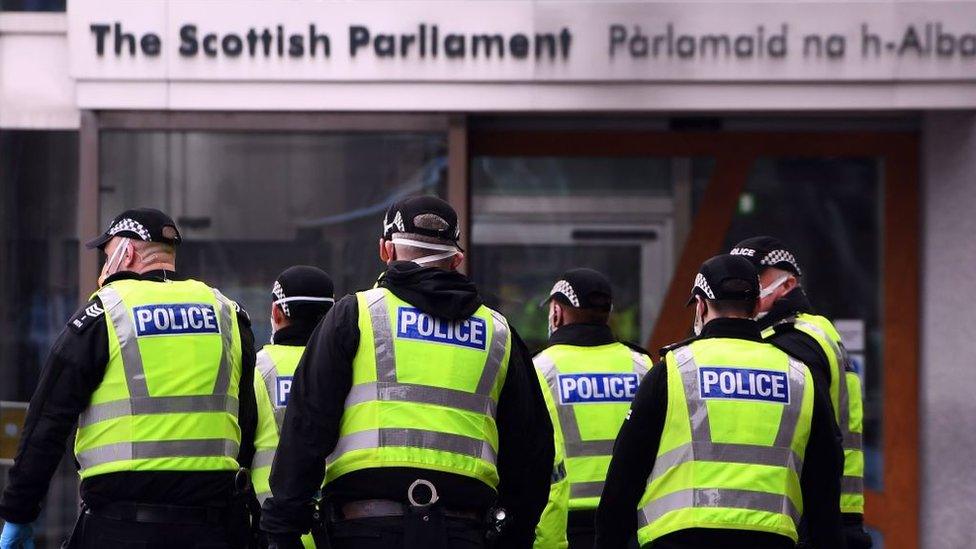
Why is this happening?
Concerns have been raised about a number of different protests over recent years, and the parliament's ability to deal with them.
Officials agreed that extra measures were needed to deal with events which could prevent the parliament from sitting, interfere with the rights of others to engage at Holyrood, or make the estate unsafe for others.
A note sent from the presiding officer to MSPs noted that "disruptive protests can become especially prolonged" - presumably a reference to the IndyCamp vigil, which was evicted from the grounds of the parliament in November 2016.
The Court of Session case seeking to remove the group ended up taking almost a year and cost the parliament about £128,000.
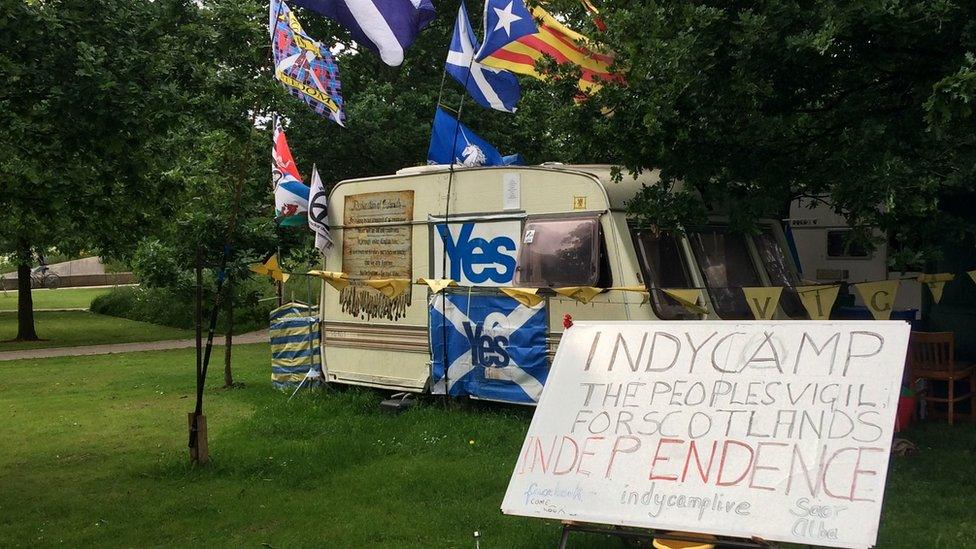
A pro-independence camp was set up outside Holyrood in November 2015 - sparking a lengthy court battle
Reference was also made to protestors climbing onto the roof - as Extinction Rebellion activists did in October 2020, requiring a "specialist policing and emergency services response" - and occupying the parliamentary chamber, as happened in January 2019.
As it stands, if someone is not committing a criminal offence then there is little the police can do to intervene or remove them from the parliamentary estate.
The "protected site" status would give officers grounds to remove anyone who is deemed to be in breach of the parliament's terms and conditions.
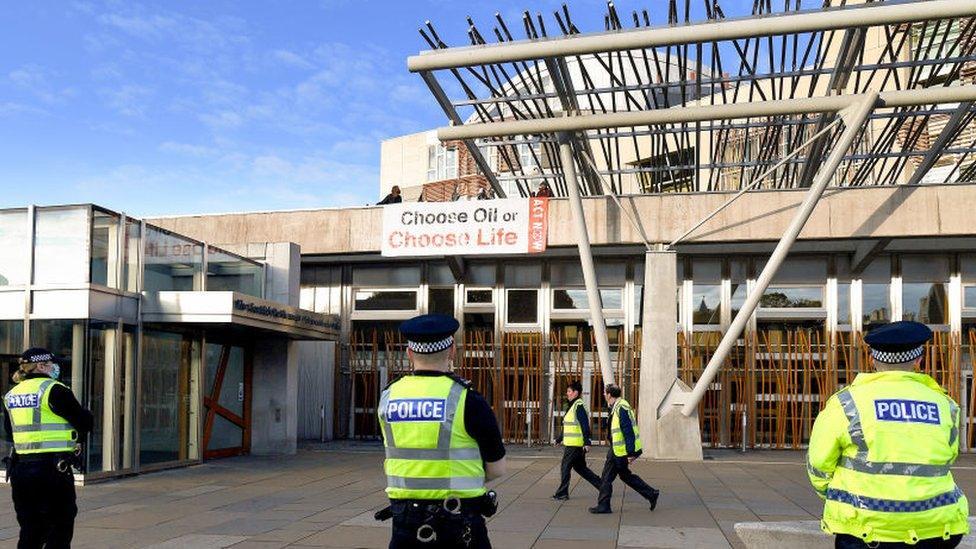
Extinction Rebellion protestors dropped a banner from the roof of the parliament in October 2020
What are the concerns?
A number of politicians and campaigners have voiced concerns that the changes could have wider-reaching consequences, and end up cracking down on a much broader range of peaceful protests.
Some say that protests are by their very nature disruptive - they get up people's noses by design - and that a protest which is embraced by the proper authorities has already been rendered somewhat pointless.
The Scottish Greens and Lib Dems have hit out, along with some members of other parties, calling for the plans to be dropped.
And the SNP conference voted on Sunday to urge MSPs to oppose the move, saying that "the parliament belongs to the people of Scotland and must remain fully accessible to the public".
The motion approved by members called on the parliamentary authorities to "seek a less confrontational approach".
The debate was not a unanimous one though, with one delegate - a member of an MSP's staff who is originally from America - saying the measures were necessary to keep everyone at Holyrood safe, citing the invasion of the Capitol building in Washington DC.
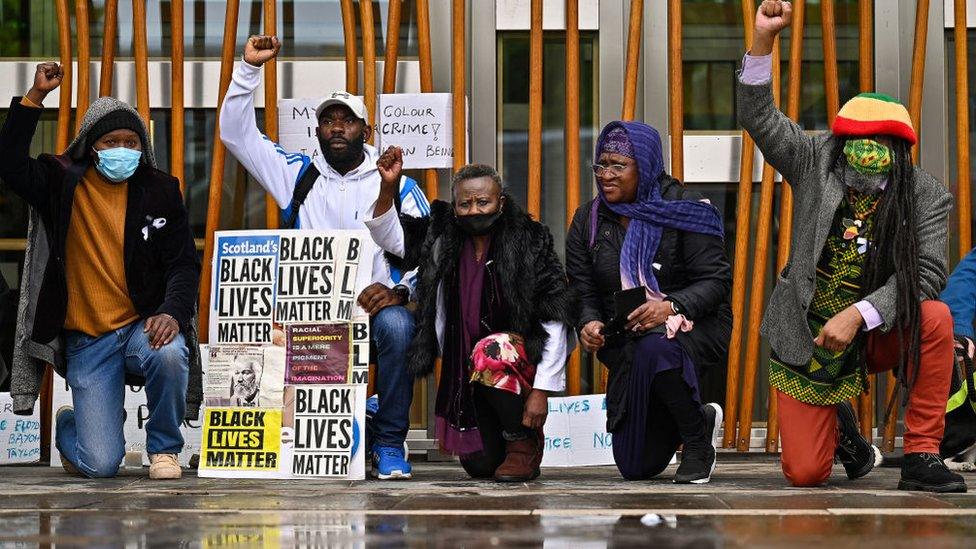
Who made the decision?
Management of the Holyrood estate is undertaken by the Scottish Parliamentary Corporate Body (SPCB), which includes a representative from each of the four main parties and the presiding officer.
It was the SPCB which applied to the Home Office - the department with responsibility for national security - to have Holyrood added to the list of protected sites.
The group discussed the plans at a meeting in June, reviewed security advice and received a "comprehensive briefing" from Police Scotland.
Although concerns were discussed by members and given "very careful consideration", they ultimately backed the plans unanimously without holding a vote.
This is fairly typical for meetings of the SPCB, where matters tend to be discussed in a non-partisan manner and agreed mutually rather than voted on along party lines.
A member of the group - Labour's Claire Baker - told MSPs that they had been assured that the new powers would be used "in only a small number of the most exceptional circumstances, when the situation cannot be resolved by the usual means via our on-site security and Police Scotland".
She added: "I make it very clear that the measure will not criminalise protesters who come to put their case outside the Parliament. I have been on marches and demonstrations all my life and I would not support measures to curtail them."
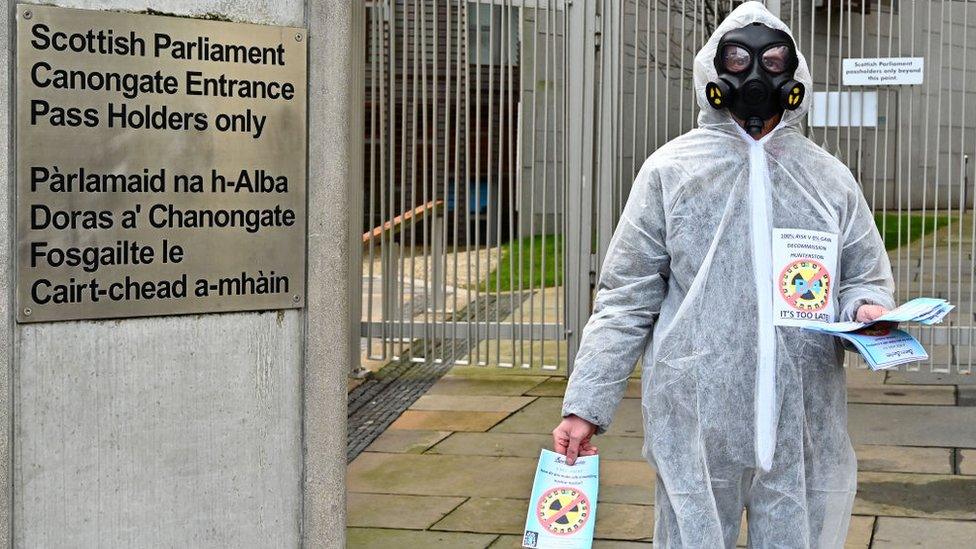
Protestors are a common sight outside the Scottish Parliament, with various groups seeking to lobby MSPs and raise issues
What could be done about it?
The change is being made via secondary legislation, which means an order has been laid before parliament - in this case at Westminster - and will come into force on 1 October unless there is a specific vote against it.
Equally if they were persuaded to change their minds, the SPCB could always apply to the Home Office to have Holyrood taken off the list again.
However there has been no sign of them backing down so far, and it is unclear if there is appetite among MSPs to compel them to do so.
While an urgent question was asked at Holyrood on Tuesday, no SNP MSPs took part in the brief session - and Labour and Conservative members intervened to say it had been helpful to have the matter clarified.
Like many of the smaller rallies which occur outside the parliament on a daily basis, this protest about protests may ultimately go unnoticed by the decision-makers inside.